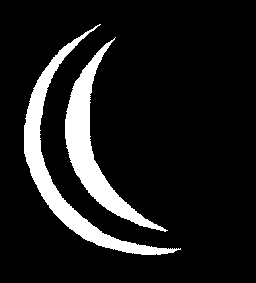 |
Science Frontiers ONLINE No. 68: Mar-Apr 1990 |
|
|
Double Image Of Cresent Moon
November 24, 1989. Knoxville, Tennessee.
"Conditions: Clear sky (no clouds, but a slight haze). Waning moon was approx. 60� above the horizon, air temperature 33�F.
"I came out of the house about 6:25 AM to perform a task and, being an amateur astronomer, I looked up at the sky to see what was visible. I noticed the crescent of the waning moon appeared as a double crescent. My eyes kept trying to resolve it into a single image, but it wouldn't resolve. I then looked at several other light sources (radio tower, porch light, & street light) and determined that my vision was probably fine, as these objects appeared as single images. Looking back at the moon, it still appeared as a double image. I covered the right eye and I still saw a double image. I did the same with the left eye and got the same results. I then held out my right arm and extended my thumb to cover one crescent. I saw only one image that way. I moved my thumb and the image was again doubled. I concluded that I was viewing refracted images of the moon.

"Conditions prevented continuous observation, but I was able to return approximately every five minutes. By 6:55 AM the sky was brightening and there was only a single lunar crescent."
(Miles, Bob; "Double Image of Crescent Moon," Teknowledgy Press, 1989. Cr. D.K. Hackett)
Comment. Although refraction is usually blamed for such double images, the different layers of air, with different refractive indices, would normally be disposed horizontally, not at the angle shown in the illustration.